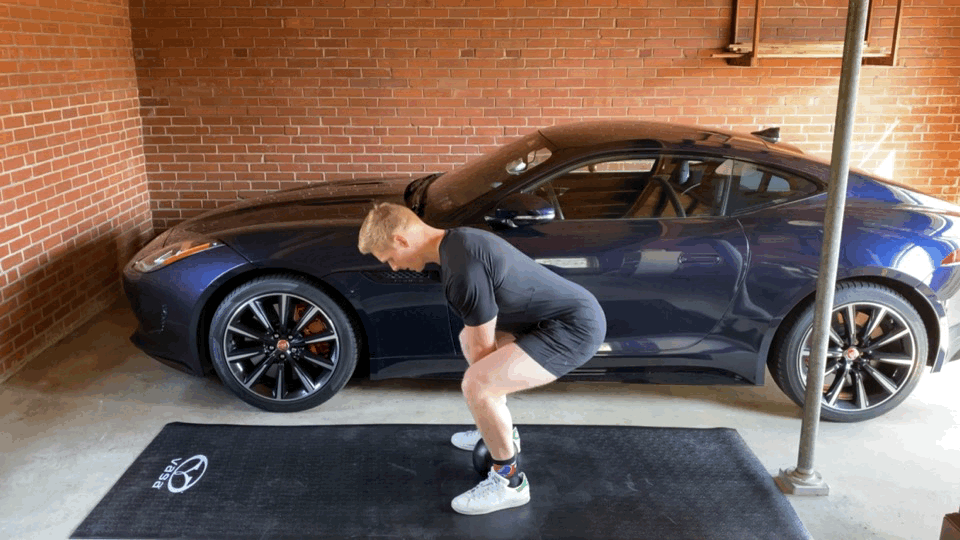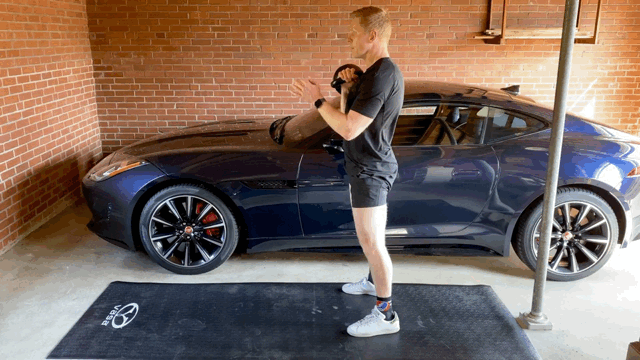The Gym in Your Hand: Kettlebell Training Made Simple
/The kettlebell has long been regarded as the gym in your hand. The cast-iron device packs a big punch in a small, heavy footprint, suitable for dozens of exercises from mobility to power. In fact, they’re so practical, they’re sold out everywhere these days. See why the majority of my own and client strength and conditioning is done with a kettlebell. Kettlebells are particularly beneficial for strength training for endurance athletes, offering a mix of functional strength and conditioning that enhances performance without excessive bulk. Check out some of my favorite programming exercises used to introduce kettlebells to new clients.
Ready to boost your strength? Let’s chat, or explore our kettlebell programs available in the app!
Why I Love Kettlebells (And Why You Will Too)
When one of my elite swimmers first questioned using kettlebells, asking "Won't this bulk me up?", I smiled. I've heard this concern countless times, and I love showing athletes how kettlebell training actually enhances their sport-specific performance without adding unnecessary mass.
Through years of coaching experience, I've found kettlebells offer unique benefits that traditional gym equipment simply can't match:
Efficiency That Fits Real Life: As a coach, I've worked with busy professionals who barely have 30 minutes to train. That's where kettlebells shine. Last month, I helped a triathlete modify her entire training program around two kettlebells and a pull-up bar, and she shaved 5 minutes off her race time.
Movement That Makes Sense: Unlike isolated machine exercises, kettlebell movements mirror the way your body naturally moves. I've watched swimmers dramatically improve their underwater pull pattern after mastering the kettlebell clean and press, as both movements require similar core-to-extremity power transfer.
Mobility Meets Strength: In my practice, I've seen countless athletes transform their movement patterns through mindful kettlebell training. One of my masters swimmers struggled with shoulder mobility until we incorporated kettlebell arm bars into his routine – within weeks, his freestyle catch position improved significantly.
Starting Your Kettlebell Journey: Lessons from the Pool Deck
Having guided hundreds of athletes through their first kettlebell sessions, I've developed a foolproof approach to getting started. Here's what I tell every new client:
Choosing Your First Kettlebell
The biggest mistake I see? Going too heavy too soon. While I typically recommend 12kg (26 lbs) for men and 8kg (18 lbs) for women, these are just starting points. I recently had a former collegiate athlete start with 16kg, while I guided a recovering back patient to begin with just 4kg. Listen to your body and respect the learning curve.
The Foundation: Movement Prep
Before we touch a kettlebell, I take every client through these essential prep movements. I've refined this sequence through years of coaching:
Armbar Series (2 sets of 5 reps per side) I've seen this simple movement transform shoulder mobility in swimmers. Focus on keeping your eyes on the bell throughout the movement.
Armbars - great starter exercise to learn how to hold the bell fully supported on your back, while learning to activate your glutes, mobilize your thoracic spine, and load your shoulders.
Half Kneeling Halos (2 sets of 10 reps) This is your secret weapon for better thoracic mobility. I guide my triathletes to use this as part of their pre-ride routine.
Half Kneeling Halos - Progression from the ground onto one knee. This drill is great for improving both mobility and stability, in the hips and shoulders.
Racked Marches (2 sets of 20 steps) A game-changer for core stability. Pay attention to how your breathing naturally syncs with the movement.
Racked Marches - Increasing the demands again from kneeling to standing, mobilizing and stabilizing the hips and core, while learning the rack position.
Building Real-World Strength: My Go-To Exercises
After years of testing different approaches, I've identified these key movements that deliver the best results for my athletes:
The Essential Five
Goblet Squats: The foundation of lower body strength. I've had swimmers add inches to their vertical jump through consistent goblet squat practice.
Goblet Squats - If you only did one exercise….Grab a bell, touch your knees to your thighs, and stand up tall. This lift is hard to do wrong. Enjoy improvements in both mobility and strength, through your ankles, knees, hips, and core.
Sumo Deadlifts: Perfect for developing hip power. One of my triathletes credited this movement with eliminating her chronic hip flexor issues.
Sumo Deadlifts - This hip dominant exercise prepares you for the kettlebell swing, and teaches you the proper way to pick things up with your legs, maintaining a neutral spine.
Single-Arm Rows: Critical for balanced upper body development. I regularly use these to help swimmers correct stroke imbalances.
1 Arm Bent Over Rows - Strengthen your postural stabilizers and pull strength with this lat and bicep centric horizontal pull.
Split Stance Deadlifts: Perform a one-sided deadlift with the kettlebell, mimicking asymmetrical stances used in sports and daily life.
Split Stance Deadlifts - Increase load and demand in a split stance with one arm, specific to the asymmetrical stances we assume through activities of daily living and sport.
Overhead Pressing: Build upper body strength and stability, preparing for advanced lifts like snatches. Watch this demo.
Overhead pressing - The lift you did all those armbars and halos for. An empowering feat of upper body strength, and a precursor to more advance Snatches.
Kettlebell Swings: The power generator. I've seen remarkable improvements in swim starts and running economy after athletes master this movement.
Kettlebell Swings - the quintessential kettlebell skill. It’s the full expression of lower body power, having great carryover to athleticism.
Kettlebell Clean - A progression of the swing, and an exercise in itself, it’s a fundamental skill for racking the bell, used for many other exercises.
Sample Training Session: My Proven Template
Here's the exact workout structure I use with my intermediate athletes:
Warm-Up (10 minutes)
Armbar Series: 2x5 each side
Half Kneeling Halos: 2x10
Racked Marches: 2x20 steps
Strength Focus (20 minutes)
Goblet Squats: 3x10
Single-Arm Rows: 3x8 each side
Turkish Get-Ups: 2x3 each side
Rest 60 seconds between sets
Power Development (10 minutes)
Kettlebell Swings: 3x15
Rest 90 seconds between sets
Cool Down (5 minutes)
Mobility work focusing on areas that feel tight
Deep breathing in child's pose
Learn how to avoid a common mistake in the Turkish Getup that could limit your progress and lead to injury. Master the proper technique for better results!
A Special Note for Swimmers and Triathletes
As someone who's spent countless hours on pool decks and transition areas, I understand the unique demands of endurance sports. Kettlebell training, when programmed correctly, complements your training perfectly. I've seen swimmers maintain their taper strength without bulk and triathletes improve their power output while reducing injury risk.
Ready to Transform Your Training?
After seeing hundreds of athletes transform their performance through kettlebell training, I'm confident these tools can help you reach your goals. Whether you're aiming for a podium finish or simply want to move better in daily life, I'm here to guide you through the process.
Want to learn more? Drop me a message, and let's discuss how we can integrate kettlebell training into your program. Or check out my specialized kettlebell programs, designed specifically for swimmers and triathletes, delivered right to your training app.
Remember: Every master was once a beginner. The key is starting with proper guidance and progressing at the right pace. Let's begin this journey together.











